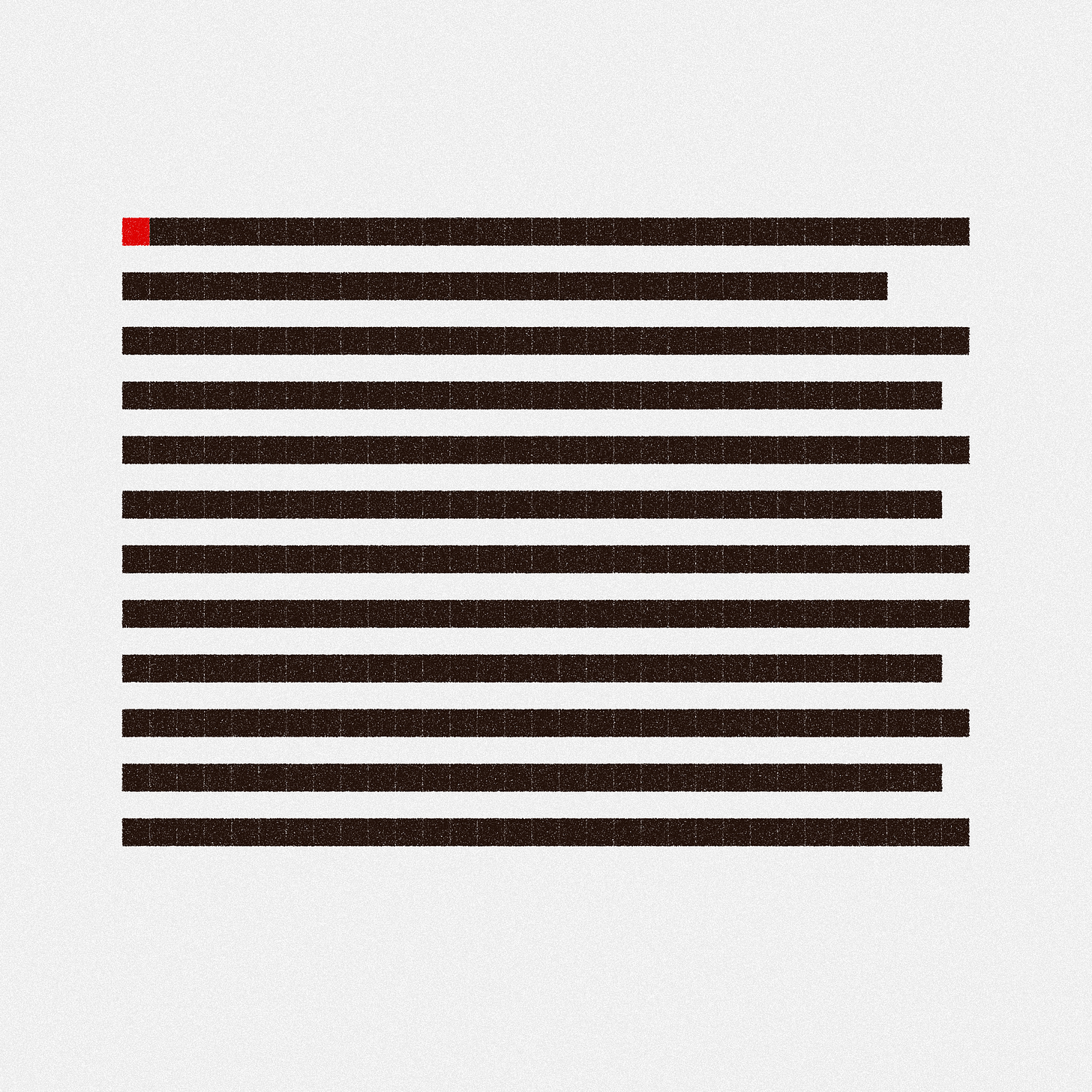🏙 Yazid is Creating Simple, Minimal and Artificially Imperfect NFTs
Get a quick glance of the artist behind Hashed Cities
This article is part of the #30NFTArtists30days challenge, where I write a daily newsletter edition about a different NFT creator during March 2022.
If you are into minimalistic and abstract designs that still resemble physical objects or scenes, then you will love Yazid’s work. Like many other creators, the generative artist started his journey on the Tezos blockchain in April 2021 through the hic et nunc marketplace.
Yazid Origins
His work in professional services led him to crypto and eventually into NFTs. That’s when he decided to get his hands dirty by minting to grasp all the concepts behind this emerging technology.

I work in innovation for financial services and around late 2020 I started to notice a few trends which were starting to converge, such as more mainstream adoption of crypto, and the emergence of new groups of investors and asset classes (such as art, collectibles, or fractionalized assets). My research led me to NFTs and I eventually decided to do what I usually do whenever I want to get a better understanding of something technical, which is to get my hands dirty and actually try it. The fact that I was already familiar with crypto and comfortable with both technology and visual design made it slightly less daunting for me.
You could say Hashed Cities is his most popular generative collection until today. With a total volume of over 16k Tezos (~ $60k) and a market floor of 225 Tezos (~$800), it is one of the most iconic collections on the FxHash marketplace. This series continued his genesis drop on the same platform, titled Hashed Arcs.

Yazid has been making a daily NFT in a special series
This year, Yazid released a new series called 365. Described as “Minimalist representations of each day of the year,” he mints a new piece each day and is sold through open auctions on objkt.com. I wonder for how long will these series run?

Yazid’s Creative Process
When asked about his creative process, the artist has an open method, where he explores different ideas and sees where they get him. Sometimes, he said, those will not materialize into a final piece, so he saves them for future references or inclusions.
I usually set out by attempting to execute a concept or some kind of imagery by code and just take the process from there. The initial spark of inspiration could be anything from old/traditional artworks to anything visual that I’ve seen really. These explorations don’t always materialize into finished products but there would typically be some kind of function or component that I’d create in the process which would come in handy later. So I’m just amassing these reusable primitive bits and pieces as I go and pull them back up whenever the need arises.
I find this way of designing very interesting. Especially when toiling with code, it might be wise for generative artists to think about “components” or “modules” that can later be reused or improved, similarly to building software products.

How Other Creators found inspiration in Yazid’s work
Other creators found inspiration by his particular style and incorporated it into their pieces. For example, M J Lindow mentioned “Artificial Imperfection” in the tweet below and attributed the concept to Yazid. The Non-Spaces evolutionary feature from ismahelio was inspired by this idea. Also, FxApes by LittleSilver included attributes like the artificial imperfection on the sun’s background. Finally, Complicare by nichhib included Yazid, among other artists, as his inspiration source.



Upcoming collection on Art Blocks
When I asked what he is currently focussing on, he pointed out a special algorithm he has been developing since September 2021. The “Sharpie Bot” has kept Yazid busy for several months, and it seems like it might be dropping very soon (although the platform and blockchain are still TBD).
“𝙸 𝚊𝚖 𝚒𝚗𝚝𝚛𝚒𝚐𝚞𝚎𝚍 𝚠𝚒𝚝𝚑 𝚝𝚑𝚎 𝚜𝚑𝚊𝚙𝚎𝚜 𝚙𝚎𝚘𝚙𝚕𝚎 𝚌𝚑𝚘𝚘𝚜𝚎 𝚊𝚜 𝚝𝚑𝚎𝚒𝚛 𝚜𝚢𝚖𝚋𝚘𝚕𝚜 𝚝𝚘 𝚌𝚛𝚎𝚊𝚝𝚎 𝚕𝚊𝚗𝚐𝚞𝚊𝚐𝚎. 𝚃𝚑𝚎𝚛𝚎 𝚒𝚜 𝚠𝚒𝚝𝚑𝚒𝚗 𝚊𝚕𝚕 𝚏𝚘𝚛𝚖𝚜 𝚊 𝚋𝚊𝚜𝚒𝚌 𝚜𝚝𝚛𝚞𝚌𝚝𝚞𝚛𝚎, 𝚊𝚗 𝚒𝚗𝚍𝚒𝚌𝚊𝚝𝚒𝚘𝚗 𝚘𝚏 𝚝𝚑𝚎 𝚎𝚗𝚝𝚒𝚛𝚎 𝚘𝚋𝚓𝚎𝚌𝚝 𝚠𝚒𝚝𝚑 𝚊 𝚖𝚒𝚗𝚒𝚖𝚞𝚖 𝚘𝚏 𝚕𝚒𝚗𝚎𝚜, 𝚝𝚑𝚊𝚝 𝚋𝚎𝚌𝚘𝚖𝚎𝚜 𝚊 𝚜𝚢𝚖𝚋𝚘𝚕. 𝚃𝚑𝚒𝚜 𝚒𝚜 𝚌𝚘𝚖𝚖𝚘𝚗 𝚝𝚘 𝚊𝚕𝚕 𝚕𝚊𝚗𝚐𝚞𝚊𝚐𝚎𝚜, 𝚊𝚕𝚕 𝚙𝚎𝚘𝚙𝚕𝚎, 𝚊𝚕𝚕 𝚝𝚒𝚖𝚎𝚜.”
Automatism' is inspired by the practice of artists where they are given a writing implement and a blank surface, and they go freestyle, almost mindlessly filling up the space with whatever comes to their minds and out of their hands. I've often wondered where a machine's mind and "hand" would wander given the same opportunity.
The way "Sharp-E" draws the strokes is through a mix of various movements — irregular curves, straight lines, sudden changes in direction — in a classic random walk algorithm.
So where does your mind wander? What forms do you see?



Don’t forget to follow Yazid on Twitter to not miss this exciting new drop.
Until next time,
- Kaloh
Consider subscribing to Kaloh’s Newsletter to receive my articles for free in your inbox. For the full experience, become a premium subscriber.
What you’ll get:
Premium posts + TezosNFT market updates, in addition to three monthly public posts.
Access to my private Discord server.
Participate in monthly NFT giveaways.
Find all the details here.




